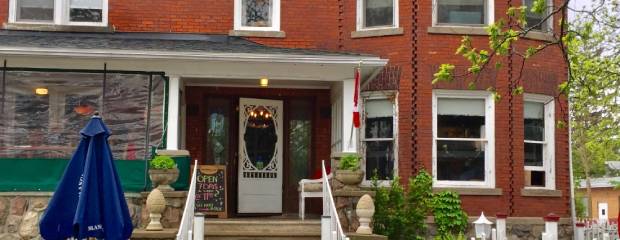Every September, families, friends, and parishioners gather in St. Maron’s Church parking lot in Northeast Minneapolis for the annual Lebanese Festival. The fragrance of lahmajeen and chicken kebab sandwiches, painstakingly prepared by volunteers, fills the air; a sense of jubilation is palpable. The 2024 festival, held September 21 and 22, marked 33 years since its inception. The festival has spent more than three decades serving as a bright reminder — and informal educator — of Lebanon’s 7,000-year history: Its culture, traditions, people, and, of course, its cuisine.
This marked my 11th year attending the Lebanese Festival — I’ve made it an annual tradition since a friend told me about it back in 2013. Gatherings like St. Maron’s provide a way for me to better know my community at large, and the people, traditions, and cultures that make it so vibrant. A few of my other local favorites include the St. Mary’s Coptic Festival in South St. Paul, or the Armenian Festival at St. Sahag church. These festivals play enduring roles both within these diasporic communities and beyond them. Laurent Hage, chairperson of the Lebanese Festival, tells me that the festival is a gathering place for more than just St. Maron’s parishioners — many people from various Levantine communities attend. “That gives us more responsibility and more visibility as well, to really preserve the culture and keep doing it,” he says.
This year, though the Lebanese Festival maintained its usual sense of joy, news of the unfolding crises in Lebanon seemed to hang in the air over the two-day duration. A few days before the festival, on September 17, 11 people were killed and around 2,700 injured in an Israeli pager attack targeting Hezbollah operatives; that weekend, Israel began a series of airstrikes that have since killed thousands of people and displaced more than 1 million. Israel and Hezbollah have traded fire on a near-daily basis for the past year, but the recent airstrikes mark a serious escalation in violence.
:no_upscale()/cdn.vox-cdn.com/uploads/chorus_asset/file/25666604/Dabke_drummer.jpg)
Chorbishop Sharbel Maroun, known as Abouna to his parishioners, has served the church since 1989. He tells me that he had seen via Facebook that some Lebanese festivals in other cities had been canceled in the wake of these events, but he didn’t want to cancel St. Maron’s. In its 33 years, the festival has been foregrounded by conflict and crisis before. Lebanon has long been an “arena” where various wars have played out, Chorbishop Maroun says, citing the first and second World Wars; the invasions of 1982 and 2006; and the present-day conflict. He himself had lived through part of Lebanon’s civil war before emigrating to the U.S. in the 1980s.
“War is not the making of innocent people, on all sides and in all countries,” Chorbishop Maroun says. He wanted to forge ahead with the festival to highlight the vitality of Lebanese culture — even and especially amid the current crisis. “When we look at the situation in Lebanon, what do we do? Do we just sit down, lament amongst ourselves, and cry? Or do we try to connect with those in Lebanon in prayers, and show the world what we are all about, and why our life is special?” Ten percent of the festival’s proceeds go to support Caritas, an organization that is currently delivering crucial aid to people in Lebanon amid the conflict.
:no_upscale()/cdn.vox-cdn.com/uploads/chorus_asset/file/25666586/460529173_18001750550654444_5783022058880035013_n.jpg)
:no_upscale()/cdn.vox-cdn.com/uploads/chorus_asset/file/25666590/458290042_10160509631400823_8838387668914050660_n.jpg)
In addition to the Lebanese feast served at the festival, there’s music and traditional dancing — dabke, to be specific, a Levantine folk dance — games for kids, silent auctions, a “cultural store” offering traditional food and religious items, and tours of St. Maron’s church, a stately stone building crowned with a golden dome. Chorbishop Maroun says Lebanon is a small country — one of the smallest in the Levant region, in fact — that has made large cultural contributions to the world, enumerating everything from the Phoenician alphabet to Charles Malik, a key writer of the United Nations charter.
That element of cultural education is part of the festival’s mission, but so is the simple joy of sharing traditions. “We want to show we’re a people that love life, even when we’re 6,000 or 7,000 miles away from Lebanon,” Chorbishop Maroun says. “We are trying to show that we come from something that we’re all very proud of.” He told me that, over the years, the festival has expanded, and now many travel from surrounding states to attend: After the pandemic, it was bittersweet and all the more special to see families and friends reuniting with embraces and handshakes.
When I arrived at the festival, I rushed to get my space in line for the fresh mana’eesh, a flatbread typically lashed with a za’atar and olive oil mixture across the length of dough, which can also be covered in cheese upon request. (A version seasoned with either minced meat and spices is called lahmajeen.) I devoured the accompanying creamy labneh, mint, tomatoes, and olives even more quickly than the bread itself. My perennial Lebanese Festival favorites include chicken kebab sandwiches smeared with toum, a bold garlic spread; and rice pudding, fragrant with orange blossom water and topped with crushed pistachios. Other festivalgoers opted for traditional desserts like zalabieh, a fried dough seasoned with cinnamon and sugar, which have a similar consistency to churros.
:no_upscale()/cdn.vox-cdn.com/uploads/chorus_asset/file/25666613/460477896_18001750553654444_513756351711397438_n.jpg)
:no_upscale()/cdn.vox-cdn.com/uploads/chorus_asset/file/25666592/Abounas_Ice_Cream.jpg)
:no_upscale()/cdn.vox-cdn.com/uploads/chorus_asset/file/25666593/460483932_18001855997654444_5949151039256181630_n.jpg)
I chatted with some of the volunteers who were making the mana’eesh, baking it on a domed grill. They told me they felt blessed for their community and those outside of it who wanted to partake in the festival and learn about Lebanon’s traditions. Since the festival’s inception in the 1990s, they said, they’d dealt with misguided conceptions about Lebanon and its people. The festival, after all, isn’t about geopolitics: People come to learn about the country’s culture, about “what we do and who we are,” Hage says. And even though St. Maron’s church is the anchor of the festival, people of many different religious backgrounds — adherents of different sections of Christianity, Muslims, and others — volunteer to put it on every year.
In the weeks since the festival, as the crisis in Lebanon has deepened, Hage tells me that it’s been very present in the hearts and minds of those at St. Maron’s — people have been talking about it “every day,” he says. But the community, which has seen its share of conflict, is resilient, and committed to living fully. “We talk about it, but we don’t stop life,” he says. “You see people very upset or very anxious, but they don’t stop what they are doing every day, right? That’s something that we’ve learned over the last 50 years of war.”


![17th Nov: Nayanthara: Beyond the Fairy Tale (2024), 1hr 22m [TV-14] (6/10)](https://occ-0-70-1722.1.nflxso.net/dnm/api/v6/Qs00mKCpRvrkl3HZAN5KwEL1kpE/AAAABawiY2ZJ1gOi0xrvM0FjqYnfLKsfFzXxAEIL6cCNO9bycP9wSFPXKbHVA9cMJmfDqywvEuKK4F5OvRZxn_vbS_zEilJrLN3-noRZAdXWO3GvMdAmG09hGKt6WJ_kgBgUF2cgMq00UfVK0h79mp442m1Izt9BA5boKyeopCOLv02M4ZfLVoW4cgnEAsXnorZRSVMQEWU-4DzSNsfevPOQuXcpXKX4EH4IK7LOih5Sb7MtwvGQVKgRV3XJQH8QOn5I-ILyyPO6JX0uZXDTAQqAaAVumVWCOwDjc64voKYeZ7-1ViIK-TUMHuIcJQ.jpg?r=4b4)














